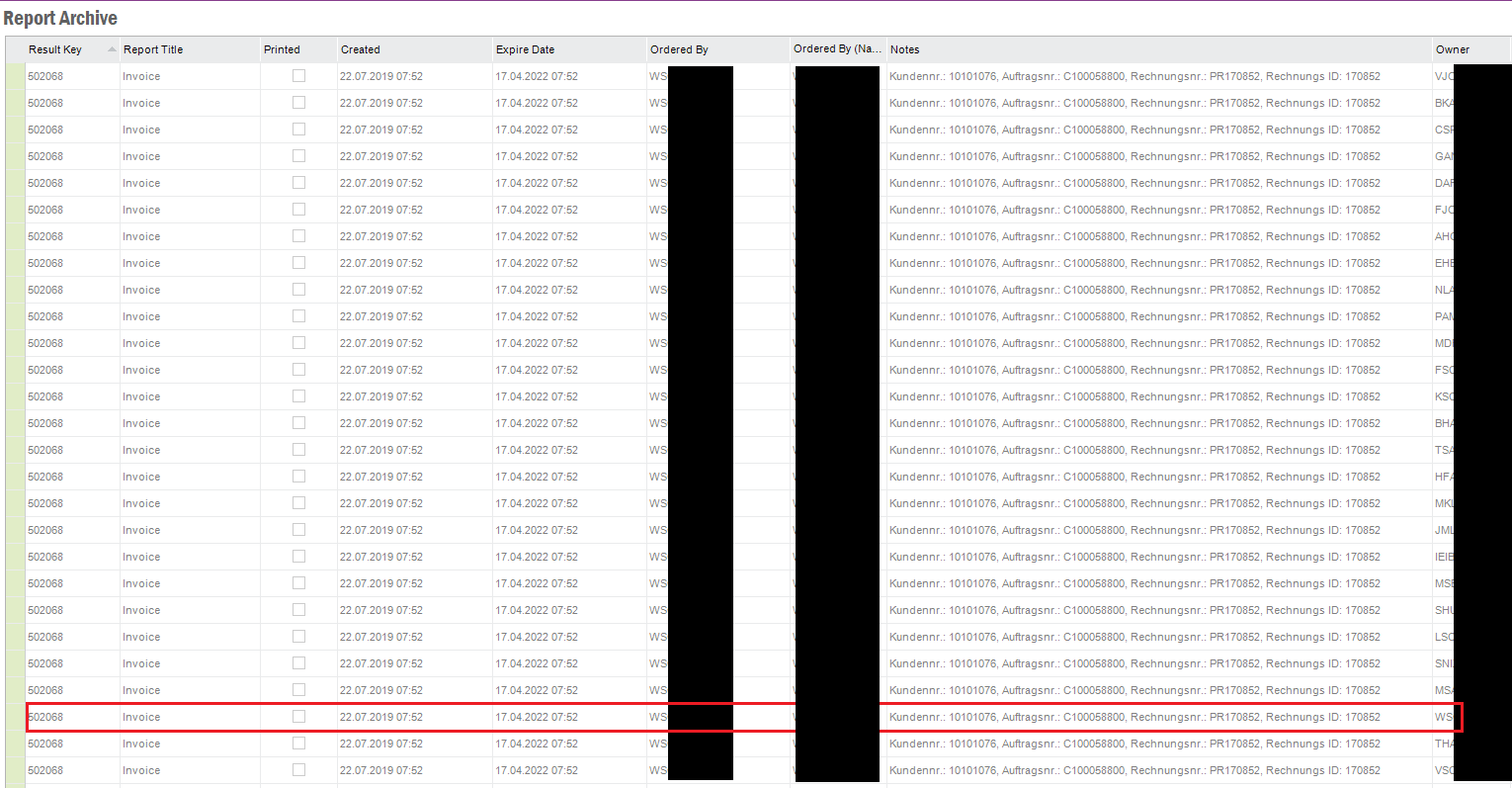Hello Community,
we are currently using IFS9 UPD16 and are planning to use the Report Archive to store documents for several years to meet government requirements.
We are aware of the option with the default lifetime. With that we could set the reports up for 10 years, but that would save all reports, even the ones that we do not need to store for such a long time (e.g. preliminary invoices or test prints etc.).
That is why we have created different SQL rules depending on the report to change the Expiration Date in the Database directly. To be more precise, we update the field expire_date in the table archive_distribution_tab. These jobs would then be executed as scheduled jobs on the DB.
Several tests of ours were successful. Means after changing this date, the reports were available after the original expiration date.
But as this is a very sensitive topic we need to make sure this is really enough to store those documents for years or if we are missing something. Can we expect to have the option ‘Show PDF’ years later, by only changing this single field? So it’s not only about keeping the record, but the actual PDF as the original document!
This is one of the SQL queries to get a better understanding:
update archive_distribution_tab t
set t.expire_date = t.expire_date+100
--set t.expire_date = t.arrival_time+4020
where exists (select t2.result_key
from archive_tab t2
where t2.result_key=t.result_key and t2.report_id in ('CUSTOMER_ORDER_IVC_REP')
and t2.sender=t.user_name
and t2.notes not like '%: PR%')
and trunc(t.expire_date) < to_date('31.08.2021','DD.MM.YYYY')
Another question would be if there is any impact to be expected on the performance?
Currently we have around 140k entries in the archive_distribution_tab. I expect that to grow into millions over the years.
Of course we need to consider the storage space, but might there be an impact of the system performance of IFS?
As last a general question - how do you manage the task of storing the original documents in your system(s)? Have you set up IFS with the default lifetime of 10 years or are you saving those documents in another system? I would be glad to get an idea on how you do it.








